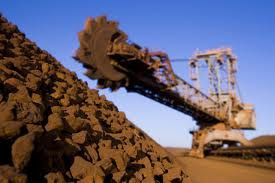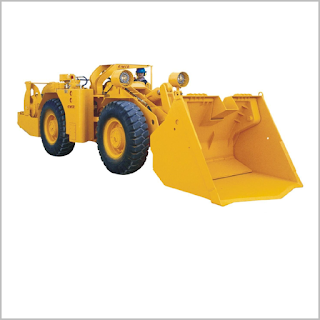mining quiz
03:39
Unknown
0 Comments
03:39 Unknown 0 Comments
mining quiz
1.Periodical medical examination is carried out for every?
2years
3years
5years
6years
2..........of the persons employed at the mine undergo the medical examination every year?
1/2
1/3
1/4
1/5
3.The remunaration for the members of the committee shall be fixed by?
central govt
state govt
company
none
4.If a member of the commiittee intends to be absent from India for a period longer than …he shall tender his resignation?
3 months
1 month
6 months
4 months
5.The secretary to the committee shall give atleast….notice to every member of the commitee present in India?
4days
7days
14days
17days
6.The annual return shall be submitted to chief inspector by manager on or before……of every year?
20th february
31st october
1st january
1st march
7.The workman inspector shall be employed if the number of persons employed exceed ?
500
1000
1500
3000
8.The term for the workmen inspector is?
5years
1year
15years
3years
9.The owner; manager or agent shall take action on the report of workmen’s inspector within a period of….from the date of entry into the register?
5days
14days
15days
13days
10.The owner/agent or manager shall constitute a ‘safety committee’ for promoting safety in the mine for more than …..persons are ordinarly employed in every mine
500
200
1500
100
answers
ఓపెన్ కాస్ట్ పద్ధతి
04:10
Unknown
0 Comments
04:10 Unknown 0 Comments
ఓపెన్ కాస్ట్ మైనింగ్
ఓపెన్ కాస్ట్ విధానంలో ప్రధానంగా రెండు పద్దతులు ఉన్నాయి.
1.మానవశక్తితో:
2. యంత్రముల సహకారంతో
ఓపెన్ కాస్ట్ గనులలోని రకములు:
- షవేల్స్, డంపర్ కాంబినేషన్ .
- షవేల్స్, డంపర్,డ్రాగ్ లైన్ కాంబినేషన్ .
- ఇన్ -పిట్ క్రషింగ్ విధానం.
- బకెట్ వీల్ ఎస్కవేటర్.
షవేల్స్, డంపర్ విధానములో ఉపయోగించు యంత్రములు :
- డిప్పర్ షవేల్
- హైడ్రాలిక్ షవేల్
- వెల్ హోల్ డ్రిల్ల్స్
- ట్రాక్టర్ షవేల్
- స్క్రాపర్
- డోజర్
- గ్రీడర్
షవేల్స్, డంపర్,డ్రాగ్ లైన్ కాంబినేషన్ .
ఇన్ -పిట్ క్రషింగ్ విధానం.
బకెట్ వీల్ ఎస్కవేటర్.
లాంగ్ వాల్ మరియు బోర్డు అండ్ పిల్లర్ పద్ధతుల విధానం.
03:39
Unknown
0 Comments
03:39 Unknown 0 Comments
బోర్డు అండ్ పిల్లర్ పద్ధతి :
- స్తంభాక్రుతిలో (పిల్లర్స్ ) బొగ్గును వదిలి వేస్తూ బొగ్గు పొరలలో మార్గాలను (లెవెల్ మరియు డిప్స్ )చేయటం ఈ పద్ధతిలో అనుసరిస్తున్న విధానం .
- స్తంభాక్రుతిలో (పిల్లర్స్ ) మరియు ,మార్గాలను (లెవెల్ మరియు డిప్స్ ) ను చేయడని డెవలప్మెంట్ దశ గా పిలుస్తారు .
- తర్వాత దశలో స్తంభాక్రుతిలో (పిల్లర్స్ ) వదిలిన బొగ్గును తేసే దశను డీపిల్లరింగ్ దశ అంటారు.
బోర్డు అండ్ పిల్లర్ డెవలప్మెంట్ దశ :
- హ్యాండ్ సెక్షన్ పద్ధతి :పని స్థలములలో(పేస్) బ్లాస్టింగ్ చేయుట వలన వచ్చిన బొగ్గు ను టబ్బులలో నింపి హాలేజి ద్వారా పైకి తీసుకొని రావటనీ హ్యాండ్ సెక్షన్ పద్ధతి అంటారు .
- యంత్రికరణ పద్ధతి : పని స్థలములలో(పేస్) బ్లాస్టింగ్ చేయుట వలన వచ్చిన బొగ్గు ను LHD/SDL ద్వారా బొగ్గును కన్వేయర్ బెల్ట్ మీదకు చేర్చి - బెల్ట్ కన్వేయర్ ద్వరా పైకి తీసుకొని వచ్చుట పద్ధతిని యంత్రికరణ పద్ధతి అంటారు .
బోర్డు అండ్ పిల్లర్ డీపిల్లరింగ్ దశ :
- కేవింగ్
- స్టోవింగ్
లాంగ్ వాల్ పద్ధతి :
- లాంగ్ వాల్ అడ్వంసింగ్(advancing): హాలేజి రోడ్డుల నుండి మొదలు పెట్టి గని సరిహద్దుల వైపునకు ఫేసు ను నడుపుదురు .
- లాంగ్ వాల్ రిట్రీట్ ఇంగ్(retreating ): గని సరిహద్దుల నుండి మొదలు పెట్టి హాలేజి రోడ్డుల వైపునకు ఫేసు ను నడుపుదురు .
గోఫ్ :
ఓపెన్ కాస్ట్ పద్ధతి తరువాయి ఆర్టికల్ లో...
The 33 International TRAILER (2015) Antonio Banderas Chilean Miners Movie
23:49
Unknown
0 Comments
23:49 Unknown 0 Comments
ద 33 అంటోనియో బండేరాస్ చిలియన్ మూవీ. మైనింగ్ కి సమంధించిన మూవీ ట్రైలర్
బొగ్గు వెలికి తీయు వీవీద పద్ధతులు
05:48
Unknown
0 Comments
05:48 Unknown 0 Comments
- చాప్టర్. బొగ్గు పొరలను వెలికి తీయు వీవీధ పద్ధతులు
- అండర్ గ్రౌండ్ పద్ధతి
2. ఓపెన్ కాస్ట్ పద్ధతి
1. అండర్ గ్రౌండ్ పద్ధతి
గని మార్గాల ద్వారా బొగ్గును వెలికి తీసేందుకు ఇందులో మరల రెండు రకాలు
1.బొఅర్ద్ అండ్ పిల్లర్
2.లాంగ్ వాల్ >1.అడ్వంసింగ్ 2. రీత్రీటింగ్
load haul dumper
08:29
Unknown
0 Comments
08:29 Unknown 0 Comments
Constructional details
Capacity
Drives
Bucket wheel excavator
01:36
Unknown
0 Comments
01:36 Unknown 0 Comments
Structure
A bucket wheel excavator (BWE) consists of a superstructure to which several more components are fixed.The bucket wheel from which the machines get their name is a large, round wheel with a configuration of scoops which is fixed to a boom and is capable of rotating. Material picked up by the cutting wheel is transferred back along the boom. In early cell-type bucket wheels, the material was transferred through a chute leading from each bucket, while newer cell-less and semi-cell designs use a stationary chute through which all of the buckets discharge.
A discharge boom receives material through the superstructure from the cutting boom and carries it away from the machine, frequently to an external conveyor system.
A counterweight boom balances the cutting boom and is cantilevered either on the lower part of the superstructure (in the case of compact BWEs) or the upper part (in the case of mid-size C-frame BWEs). In the larger BWEs, all three booms are supported by cables running across towers at the top of the superstructure.
Beneath the superstructure lay the movement systems. On older models these would be rails for the machine to travel along, but newer BWEs are frequently equipped with crawlers, which grant them increased flexibility of motion.
To allow it to complete its duties, the superstructure of a BWE is capable of rotating about a vertical axis (slewing). The cutting boom can be tilted up and down (hoisting). The speeds of these operations are on the orders of 30 m/min and 5 m/min, respectively. Slewing is driven by large gears, while hoisting generally makes use of a cable system
Size
Operation
BWEs are used for continuous overburden removal in surface mining applications. They use their cutting wheels to strip away a section of earth (the working block) dictated by the size of the excavator. Through hoisting, the working block can include area both above and below the level of the machine (the bench level). By slewing, the excavator can reach through a horizontal range.The overburden is then delivered to the discharge boom, which transfers the cut earth to another machine for transfer to a spreader. This may be a fixed belt conveyor system or a mobile conveyor with crawlers similar to those found on the BWE. Mobile conveyors permanently attached to the excavator take the burden of directing the material off of the operator. The overburden can also be transferred directly to cross-pit Spreader, which reaches across the pit and scatters overburden at the dumping ground.





















0 comments: